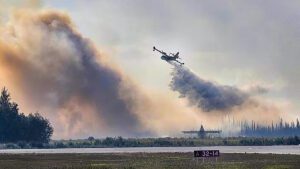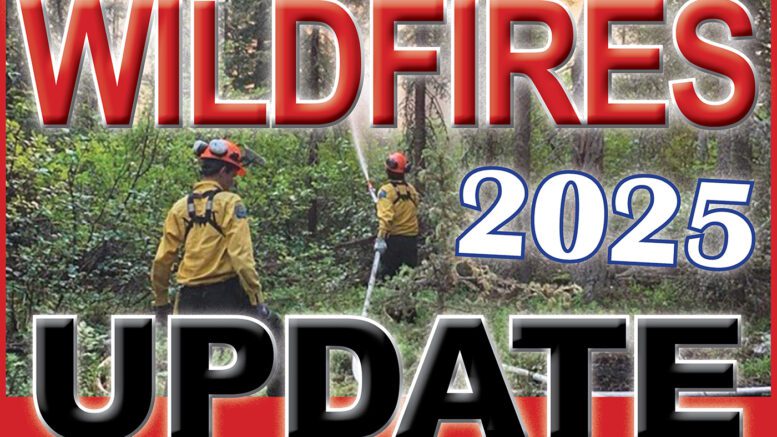Four new fires recently sparked across the Dehcho region, all of which are receiving measured responses.
These fires began while much of the NWT is experiencing weather conditions that create greater opportunities for fires to start. This includes, warm temperatures, low humidity, and high wind speeds. These weather conditions are expected to continue into the weekend.
The first of the four fires is found around 74km to the east of Fort Liard. This fire was discovered on May 29th, and as of that evening, measured at approximately 80 hectares in size. Crews and helicopters are engaged against this fire, and while it is currently considered out of control, there are no nearby communities or cabins at risk.
The second fire is about 30km southwest of Sambaa K’e. This fire is also considered out of control, and was last measured at 300 hectares. Fire crews are setting up sprinkler systems near cabins and other areas of interest. Smoke from this fire may be visible to the community.
The third fire is located just 14km north of the B.C. border, and is about 15 hectares in size. This fire is considered out of control, and crews are responding with structure protection equipment for the infrastructure in the area.
The final fire is 13km north of the B.C. border, and is also out of control. This is the smallest of the four fires, last measured at only 1 hectare in size. Crews are working to limit its growth as much as possible, and are also equipped with structure protection gear.

An air tanker drops water on the massive blaze encircling Hay River in 2023, with the town’s airport runway in the foreground. (Photo courtesy of NWT Fire)
The only other fire currently burning in the NWT is in the South Slave region, near the Slave River. This fire was caused by lightning, and was last reported as 20km from Fort Smith. This fire has grown from 7 hectares up to 58, and is considered out of control. Recent strong winds have prevented air tankers from making passes in the area, but ground crews and helicopters are still hard at work to limit growth. Smoke may be visible from Fort Smith, but NWT Fire reports that there are no communities or infrastructure at risk.
Much of the smoke experienced across the NWT is also coming from fires in Alberta, B.C., and Saskatchewan.

